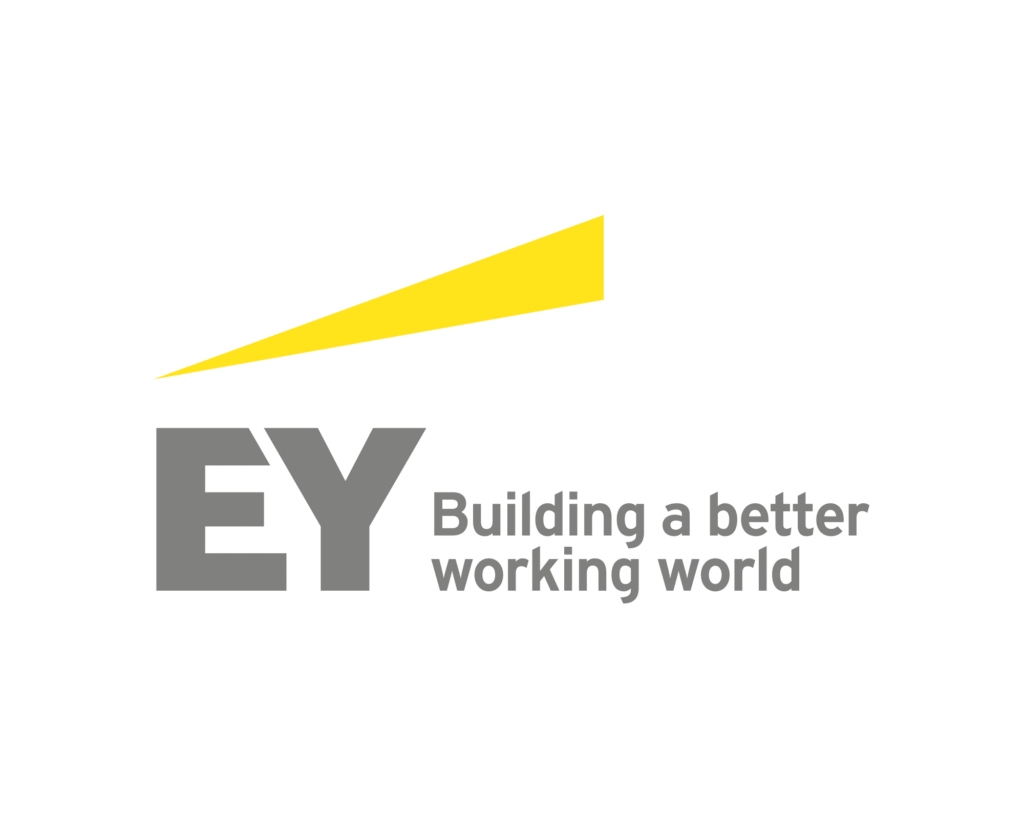About EY
Ernst & Young is a UK-based assurance company that provides professional services such as digital strategy, strategy consulting, financial advisory, and tax advisory. Headquartered in London, EY serves worldwide in 150 countries with over 700 offices. It is considered among the Big Four and companies like Deloitte, KPMG, and PricewaterhouseCoopers. Founded in 1989, EY was formed as a result of mergers of several ancient companies, the oldest being Harding & Pullein, which was initially founded in 1849. As of 2021, EY has made over US$ 40 billion in revenues. The mission statement of EY is to ‘Build a better working world.’ It is a great place to work for any professional who is looking to build a stable and high-paying career. In this article, we will discuss in detail the EY recruitment process and how to prepare for the EY interview in the best possible way.

EY Recruitment Process
The EY recruitment process involves various rounds to gauge the applicant’s professional capabilities and hire a perfect employee for the relevant role. There are primarily three interview rounds at EY, which we will discuss in detail for better understanding –
Online Assessment
During the online assessment round, candidates must go through the tests designed to assess their reasoning and mental capabilities. The online assessment round further comprises three sections –
- Aptitude test: In this test, candidates have to answer about 30 questions that help in evaluating their reasoning and behavioral characteristics.
- Logical and verbal test: This also comprises 30 questions and is designed to test candidates’ logical reasoning, verbal reasoning, and inductive reasoning.
- Coding questions test: The third section includes a coding question test, which must be solved in 30 minutes. To solve this test, you need to understand algorithms and data structures well. It may be a combination of multiple choice questions and elaborate coding questions. The questions are usually of medium-level difficulty.
Technical Interview
The technical interview round is the second round of assessment at EY. This is the next step for candidates who have cleared the online interview tests. EY conducts this round at their HIREVUE platform. This is a video-based round and may include 2 to 3 interviewers. This is one of the most important stages of the EY recruitment process.
Most of the questions in the technical interview round are from the previous project work experience of the candidate. You should also have a working knowledge of topics like networking, computer operating systems, DBMS, etc. The most commonly asked questions in DBMS are based on topics like RDMS, normalization, DML, etc. In the case of Operating System questions, most of them are asked from deadlock. You may also be asked about your work experiences in previous organizations to understand your work strategy and leadership styles.
HR Interview
The next round of interviews is the HR interview round. In this round, the company tries to understand how the candidate will fit into the company’s culture. This is an important interview round that should be thoroughly prepared. The interviewer will ask you questions involving your resume and past work experiences. Make sure to prepare your resume accordingly and provide valid answers based on past examples.
Some of the interview questions asked during the HR round include:
- Why do you want to work for EY?
- Have you ever contributed to high-performing projects? What was the experience like?
- Have you ever disagreed with someone else’s point of view? How did you manage that?
- Why should we hire you?
- What are your strengths and weaknesses?
- What interests you most about this job position?
EY Technical Interview Questions: Freshers and Experienced
Here is a list of Technical interview questions asked at EY for both beginners and advanced professionals –
What do you mean by Normalization?
Normalization is a process used to keep data organized in a database. It can be done using tables to reduce data redundancy and inconsistent dependency. Edgar F. Codd first proposed this. The tables are created according to certain rules that make the database more flexible. Normalization is a very important process for numerous reasons. The most obvious advantage of normalization is that it frees up a lot of disk space which, in turn, helps in increasing performance.
What is intercompany reconciliation?
Intercompany reconciliation refers to the process of reconciliation of transactions between two legal companies. This usually happens when two companies belong to the same corporate umbrella. As a result, one company or subsidiary will act as a customer while the other will be the seller.
What are the advantages of using stored procedures?
There are many advantages of using stored procedures. The most important benefit is that it helps in the creation of sophisticated database applications. This makes them scalable and also increases performance.
What is object-oriented modelling?
Object-oriented Modeling (OOM) is an approach that involves the application of OOPs concepts for different stages of software development. In this approach, we think of solutions in terms of real-world problems using models. The main aim of this approach is to reduce the semantic gap between the system and the real world. It is often used to test the entity before we actually start creating it. It is also helpful in coordinating with the customers. This approach finds application in creating less complex projects to improve their performance.
Define RDBMS.
An acronym for relational database management systems, it is based on the relational model that E.F. Codd first introduced. It is one of the most popular and commonly used databases. It is a collection of programs allowing the IT team to interact with the relational database. It enables them to create, store, update and administer the database.
Do you think BCNF is better than 2NF & 3NF? Why?
Yes, BCNF is far better than 2NF & 3NF. This is so because BCNF offers more powerful normalization.
What is the difference between primary key and foreign key?
Below are some of the key differences between primary key and foreign key –
- The primary key is used to identify a record with respect to a table, and the foreign key is basically the columns in the table with the primary key of that table.
- The primary key ensures that the data in each column is unique. A foreign key is a group of columns that connects data between two tables.
- One primary key is responsible for a table, whereas more than a foreign key can be there.
- The primary key contains both unique and not-null constraints. A foreign key can have duplicate values.
What is a transparent DBMS?
A transparent DBMS refers to the distribution of information in a way that keeps its physical structure hidden from the users.
What is a deadlock?
In computing, deadlock refers to a situation where more than one process is blocked because each process holds a resource that, in turn, is required by another ongoing process. Let us see a real-world example to understand this clearly. Imagine two trains that need to pass through a railway station in the opposite direction. Each train has to wait for the other one to pass, and none of them can go across the other one.
What is meant by the interface?
Interface in computing refers to the blueprint for a class. The interface is a way to achieve abstraction using variables and abstract methods but without the method body.
Where do we generally create an index?
When the table is created in the database, then the index is usually created at that time. To create an index in MySQL, you can use this statement –
mysql> CREATE TABLE t_index
( column1 INT PRIMARY KEY, column2 INT NOT NULL, column3 INT NOT NULL, column4 VARCHAR(20), INDEX (column1,column2) );
Here, the table has an index that holds two columns – column 1 and column 2.
Now, to add the index to the table, use the following –
mysql>
CREATE INDEX [index] ON [table] (column)
What are the advantages of using the stored procedures?
A stored procedure is a set of SQL statements created to perform one or more DLM operations within a database. This enables users to use them as many times as they want later. The syntax for creating stored procedure is –
CREATE PROCEDURE name_of_the_procedure
AS
sql_statement
GO;
Here are some advantages of stored procedures –
- Improved productivity: Since the same code can be used multiple times, again and again, this results in improved productivity.
- Security: It is easy to secure or restrict access to the data by allowing only certain users with privileges to access stored procedures.
- Easy maintenance: It is very easy to maintain stored procedures on a server than that of its replica on the client system.
- Improved performance: Stored procedure and only compiled once and then stored safely to be used later. It is very quick to execute them, which leads to improved performance.
Give me a SQL Query to find out the second-largest company.
| Name ABC XYZ PQR LMN | Output 100000 5000000 65000 120000 |
WITH T AS
(
SELECT *
DENSE_RANK() OVER (ORDER BY Salary Desc) AS Rnk
FROM Companies
)
SELECT Name
FROM T
WHERE Rnk=2;
Explain malloc() and calloc() in C.
The malloc() function is known as the memory allocation function. It helps in dynamically allocating a block of memory by specifying its size.
The syntax for malloc() is –
ptr = (cast-type*) malloc(byte-size)
Here is an example –
ptr = (int*) malloc(100 * sizeof(int));
Here, the size of int is 4 bytes. Hence, this statement allocates 400 bytes of memory, and ptr holds the address of the first byte.
In case the allocation fails, it returns NULL.
The calloc() function is also known as the contiguous allocation function. It is used to allocate specified blocks of memory of a specific size dynamically.
The syntax is –
ptr = (cast-type*) calloc(n, size)
Here is an example –
ptr = (int*) calloc(10, sizeof(int));Since the size of int is 4 bytes. Hence, this statement allocates contiguous space of memory for 10 elements each of size 4.
In case the allocation fails, it returns NULL
Differentiate between compiler and interpreter.
Here are key differences between compiler and interpreter –
- A compiler essentially scans the program to translate it into machine code. An interpreter is used to translate a single statement at a time into machine code. To achieve this, it follows the line-by-line translation.
- Compilers are less memory efficient as they generate object code. However, no code is generated by the interpreter, so it is more memory efficient.
- Even though the compiler reads the program in one go, it takes a lot of time to analyze the program. In the case of an interpreter, it takes less time to analyze it.
- Compilers have faster execution time, whereas interpreters execute at a fairly less speed.
What is a thread, and how is it different from the process?
In computing, a thread indicates the path of execution in a process. A process can contain more than one threads that share a common memory space. However, processes occupy different memory spaces.
Why is DML provided?
Data manipulation language (DML) represents a collection of languages that are specifically used to modify databases. DML is provided for manipulating and processing databases using common operators such as INSERT, SELECT, UPDATE, DELETE, and so on.
EY Interview Preparation – Tips and Tricks
Below are enlisted some tips and tricks that you can use while preparing for the EY interview –
- Prepare your resume well: The first tip is to create your resume thoroughly while paying attention to every detail that you mention. It should have all your credentials and experiences that you are well aware of.
- Do mock interviews: The easiest way to test your preparation beforehand is through mock interviews. You can find a variety of mock interviews online. They will help in improving your communication skills and confidence.
- Problem-solving skills: To crack EY interviews, you need to have excellent problem-solving skills. Make sure to practice questions based on data science and algorithms to get hands-on practice. Also, track time while doing so to improve your speed.
- Be a good listener: One of the best rules for nailing interviews is to pay attention to what the interviewer is saying or asking. Listen carefully and make mental notes. If you get stuck somewhere, don’t shy away from asking for help.
- Take help of anecdotes: To practice behavioural questions, you can make a list of commonly asked questions and anecdotes. Also, check the job description thoroughly and prepare answers around it as well.
- Communicate well: Interviews involve two-way communication. Make sure to listen carefully and also give detailed yet simpler explanations of the problems. This is especially helpful in the case of coding questions. Your verbal approach to solving coding problems can make a world of difference in the interview.
- Ask relevant questions: During the HR interview round, you can ask questions to the interviewer. Make sure that they are relevant and show that you are interested in knowing the interviewer’s role in the company. You can also ask about the company’s culture and work experiences of people.
- Follow the STAR approach: When you are presented with a problem, don’t rush to give your response. Instead, follow the STAR approach. It stands for Situation, Tension, Action, and Result. For example, if you are asked to talk about challenging project work, you can start by presenting clear details of the project. Then talk about the challenge or tension. Next, talk about how you acted upon those challenges and conclude with the outcomes.
Frequently Asked Questions
Practice mock interviews beforehand to ensure that you have a good grasp of the subject in less time. As the interview gets started, stay humble and listen carefully while building a rapport with the interviewers. Also, ask relevant questions that show your interest in the company’s culture and job role.
The EY interview process can be moderately difficult or rigorous, so to say. It comprises various rounds that aim to test the candidate’s mental, verbal, reasoning, and coding abilities.
At EY, there are typically three rounds of interviews, including one to two phone interview rounds and one in person. The entire process may take up to 2 months.
Typically, there are three to four stages in the EY interview process. The first two to three rounds are telephonic, while the last stage of the interview involves a face-to-face round. This is the HR round and involves discussions around salary and perks.
You should highlight your strengths and capabilities to give the interviewers a good reason to hire you. You can also talk about your previous work experiences and projects that make you excited to stand out.
A massive percentage of people, about 80%, fail to pass the EY final interview round. It is said that around 10 to 20% of candidates make it through the final round of interviews.
Roughly, it takes about 6 weeks for the entire hiring process to complete.
Getting into EY is not an easy feat. It is reported that over 2 million applications are received by EY every year. Previous candidates have rated their job interview experience 3 out of 5, with 5 being the highest difficulty level.
It depends on the interview rounds and how soon they decide on your candidature. It normally takes anywhere between 4 to 7 working days to hear from EY after all your interview rounds are done.







